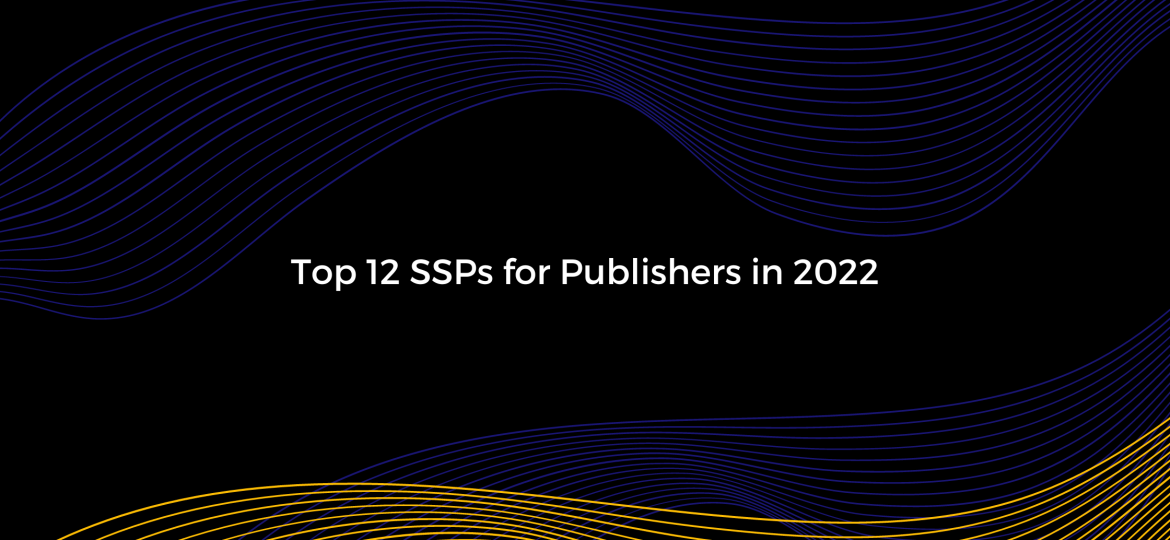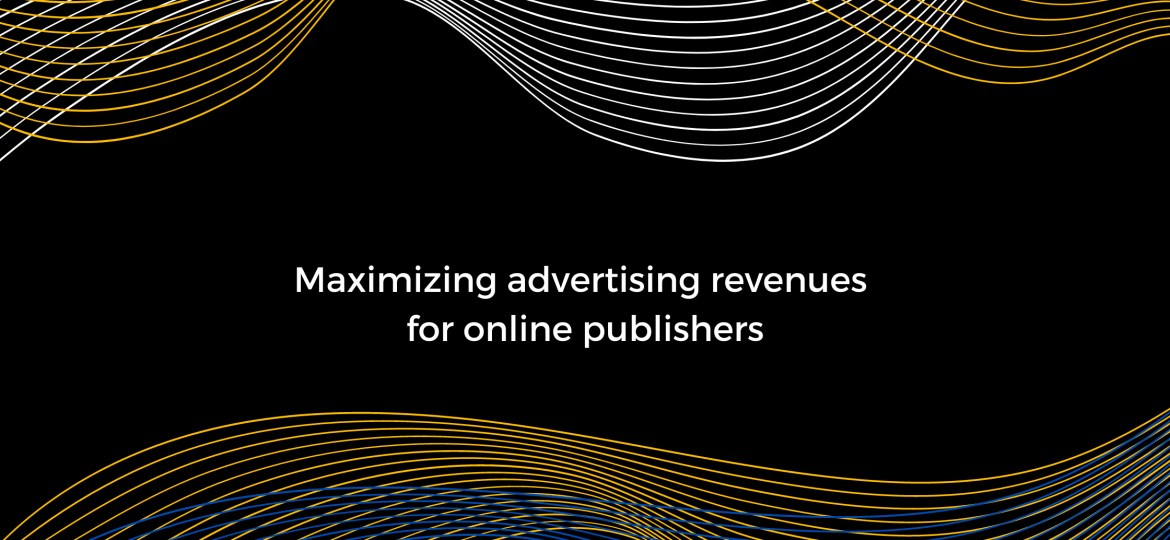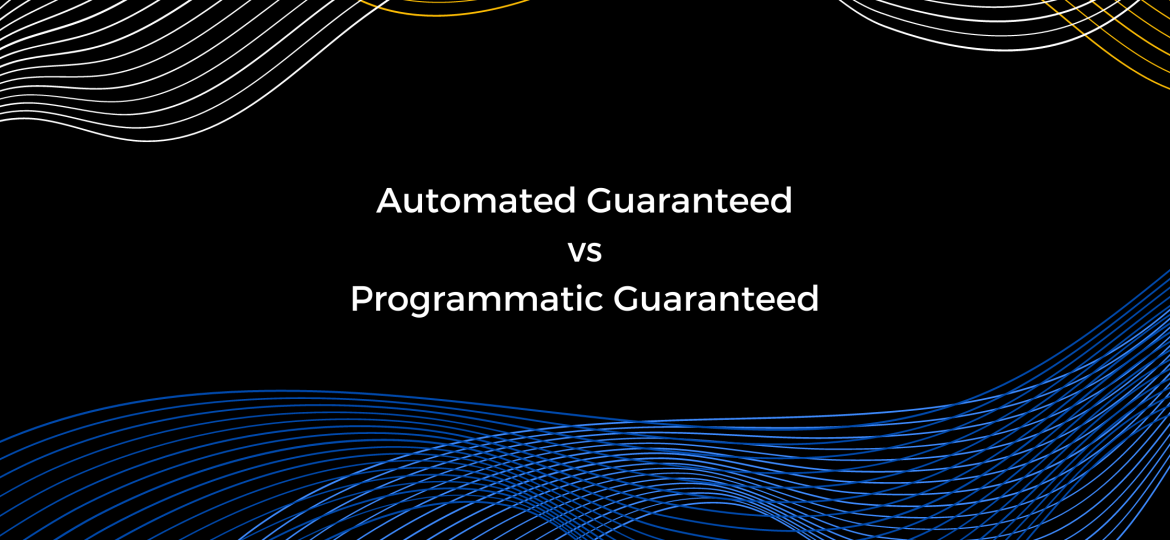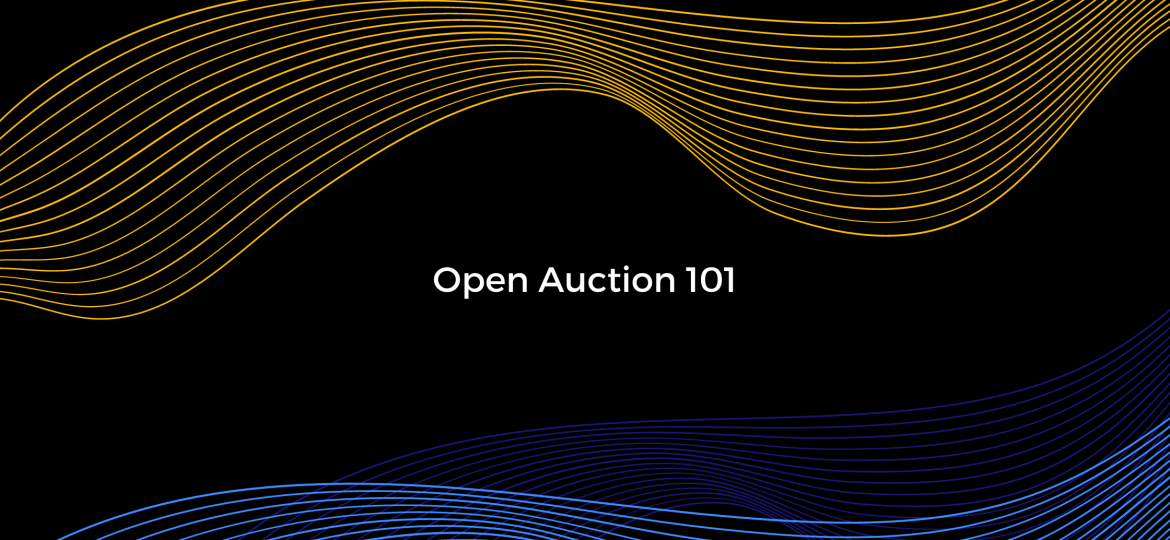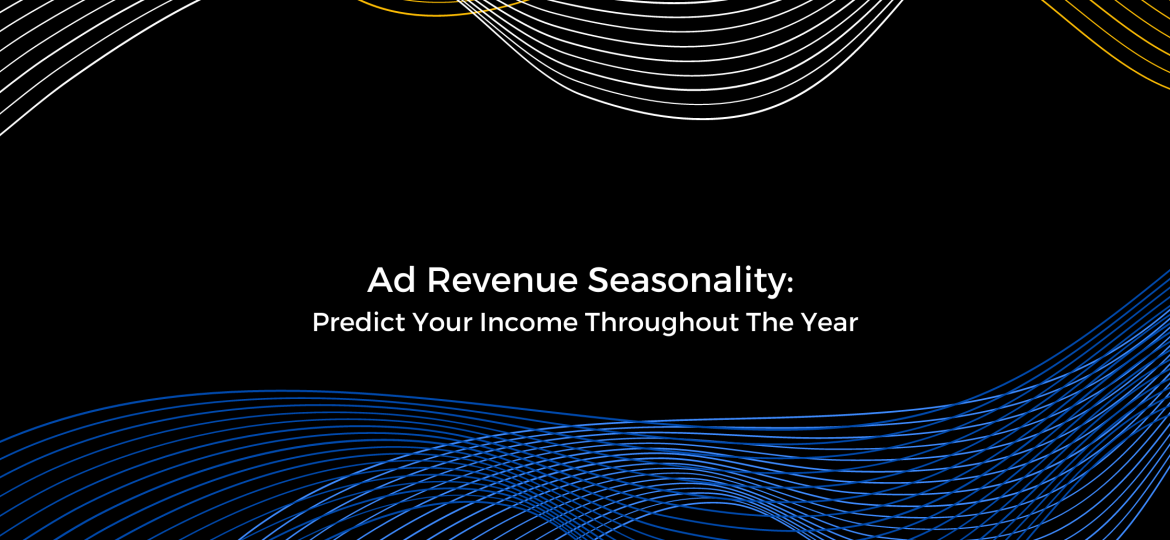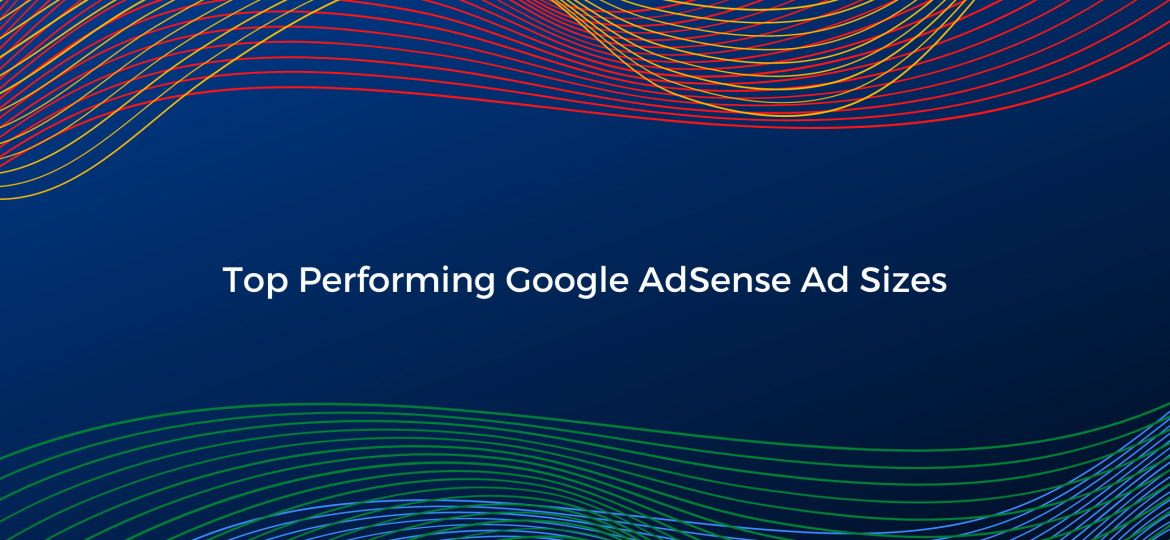Are you using an SSP? Do you know which are the best ones? SSPs can be valuable partners, especially if you find the one that best suits your needs as a publisher. While Google Ad Manager has dominated the field for a while, our article lists some of the other top SSPs that excel in the industry. Take a look at the companies below to learn more about their strengths and unique features. SSP: a definition SSP stands for Supply-Side Platform or Sell-Side Platform. It’s a solution that automates the sale of digital advertising space via real-time bidding. Aimed at publishers, it helps them monetize their inventory programmatically by exposing it to different demand sources. This may include demand partners such as ad exchanges, ad networks, and DSPs. By creating increased competition for the ad inventory and optimizing the setup, SSPs maximize publisher revenue. Top SSPs for publishers Let us take a look at some of the best SSPs in the industry. Of course, no single solution can serve as a panacea and satisfaction depends on each publisher’s priorities and criteria. However, some companies have consistently ranked well and are worth exploring. 1. Magnite Magnite (Rubicon Project + Telaria) is a large SSP that works with ad formats across all channels and premium demand. It offers Private Marketplaces (PMP), Programmatic Guaranteed (PG), and Auction Packages. Magnite’s goal is to provide publishers with transparency and expertise in the quest to maximize ad revenue. 2. Index Exchange Index Exchange is an SSP…
Revenue Optimization
We took one year of data across our portfolio of publishers with European traffic and we share our findings with you today. For clarity, we looked at all countries from the European Union plus the United Kingdom, Switzerland, and Norway, from April 1, 2021, to March 21, 2022. Let’s see what the data tells us about CPMs, how various SSPs perform, and what ad formats drive the most value. Seasonality If you’ve been running a website for a few years, you are probably already familiar with the seasonality trends in ad monetization. There are no surprises in the graph below which illustrates how CPMs in Europe vary throughout the year. As expected, the highest rates are around Black Friday and the holiday season, taking a big dip at the beginning of the year. You can see good rates at the end of Q2 when advertisers try to spend up their budgets as the timing coincides with the end of the fiscal year for most ad agencies. September and October are also typically strong with Back-to-School campaigns and getting ready for Black Friday. Ad formats Performance If you are wondering which ad formats you should choose for your site, here is a little inspiration. Although performance largely depends on your website’s specifics and audience habits, there are also factors such as demand and advertiser preference that should factor in. In the graph below you can see the top 10 ad formats as per their CPM level (calculated for the European market)….
The ability to earn money is an essential skill for online publishers. It defines the profitability and longevity of their business. However, the digital ad monetization world is getting more and more complex. This requires publishers to be more proactive and involved in order to maximize revenue and stay on top of things. This article explores some approaches for online publishers to increase online advertising revenues. It includes yield optimization tactics such as header bidding and price floors, as well as tapping into new ways to generate revenue. How to maximize ad revenue Let us take a look at some ways to grow publisher revenue: Find the optimum setup with header bidding Header bidding is not only popular, but it also allows publishers to test different scenarios. For example, you can experiment with the number of demand partners plugged in and the wrapper timeout to find the best mix. Too much demand can slow down page load, but too little demand can hurt your revenues. The same goes for the time allowed for buyers to bid. Set the proper price floors It’s important for publishers to set floors that strike the best balance between CPM and fill rate. But it’s also important to take a granular approach as opposed to a one-size-fits-all approach. To maximize revenue, you can adjust price floors based on geography, ATF vs. BTF units, etc. Informing buyers about these floors will allow them to bid accordingly. Experiment with ad layouts You can design and try out…
If you are exploring ways to increase your ad yield, you’ve probably stumbled upon ad refresh as a tool that can help you earn incremental revenue from the same users that visit your site. But what exactly is ad refresh and is it right for your site? In this article, we’ll answer these questions, as well as discuss some best practices and implications of its implementation. What is ad refresh? Ad refresh allows publishers to load new ads in a single user session without reloading the entire page. The refresh is activated on a specific trigger (such as time, event, or user action) and practically increases the ad impressions that publishers can monetize. Types of ad refresh Depending on the trigger that will activate the refresh, we differentiate between the following types: Time-based ad refresh As the name suggests, time-based ad refresh simply means that a new ad will be loaded after a predetermined time interval, such as 30, 60, or 90 seconds. The trigger will usually activate regardless of whether the user is browsing the page or not, which means they might have another tab open and not be looking at the page at all. This directly impacts ad viewability in a negative way and respectively results in lower rates for ads as advertisers are not willing to put their money on placements that are not being seen. Event-based ad refresh An ad refresh is considered event-based when a trigger is an event initiated by the publisher. Most commonly,…
With the rising popularity of native advertising, more and more publishers and advertisers are considering testing it and trying to understand how it compares to the old-school banner ads and which is a better fit for them. In order to answer these questions, it’s essential to first have a good understanding of what each format is and how they differ from each other, as well as each of their advantages and disadvantages. Let’s get right into it. What is display advertising? Banner ads, also known as display advertising, are your typical ads from the early days of online advertising and still going strong. Display ads have evolved from static images to various types of banners that have interactive and clickable elements (e.g. rich media files). They come in many sizes and can be placed across various parts of the webpage. Find out more about the best-performing banner ad sizes in this article. Display advertising has both its advantages and disadvantages and can be used successfully for various marketing purposes. Let’s look at the main pros and cons of banner ads. Pros Simple setup Banner ads are probably the most straightforward to design and implement. The variety of sizes makes them perfect for all kinds of websites and implementation is simple. High visibility The nature of display ads makes them clearly discernible from the main content on the page, which contributes to their high visibility, especially if a high-quality image is used or the ad is interactive. High fill rates As…
Ad tech terminology can get a bit confusing, even for seasoned professionals. Especially when terms are so similar to one another. In this article, we will see what exactly Automatic Guaranteed and Programmatic Guaranteed are all about, and how they differ. Let’s get right into it. What is Automated Guaranteed? The term Automated Guaranteed is used for advertising agreements that were traditionally executed via direct deals (insertion orders) and are now possible end-to-end as a programmatic direct deal. The transaction is agreed upon directly between the buyer and seller via a mediation platform and the inventory volume and pricing are fixed. Publishers usually package their inventory and present it to advertisers at guaranteed volumes. Price is negotiated and once an agreement is reached, the deal elements are plugged directly into the publisher’s ad server via the ad server’s API, which is what distinguishes Automated Guaranteed from other programmatic direct deals (such as Programmatic Guaranteed). Advantages Automated Guaranteed allows publishers to present their inventory to buyers in a way that makes the sales process more efficient and less resource-intensive. Media owners can shift the focus towards building relationships, discussing performance and strategic partnerships, while selling impressions in an optimized automatic way and filling their pipeline efficiently in the meantime. Buyers can browse through the available options, and build their own campaigns, which eliminates the need for ongoing communication on those elements and saves both sides precious time, effort, and possible misunderstandings. The price of the inventory is determined by both the…
Today, you can sell your website inventory programmatically in various ways. First and foremost, when we think about programmatic auctions, we think of real-time bidding (RTB), a.k.a. the Open Auction. In this article, we will take a closer look into what exactly Open Auction is, what are its advantages and disadvantages, and how it differs from Programmatic Direct deals. What is Open Auction? Open Auction is commonly known as RTB, and/or open marketplace, open exchange. This is currently the most popular way of trading one’s inventory programmatically and it has both its pros and cons, which we’ll look at in a bit. In an Open Auction, all demand sources on the selected platform are allowed to bid for the specified units, while publishers can set price floors and block certain advertisers and/or ad types. RTB has the lowest priority in the ad server, second only to house ads, and is most suitable for monetizing your remnant inventory. Currently, most open marketplaces run on first-price, meaning that the highest bid wins and the publisher takes a share of that price, depending on the platform’s terms. Advantages Accessibility: easy and quick setup that can be utilized by publishers of all sizes; Wide demand pool: ideal for monetizing any unsold impressions and maximizing your revenue; Hassle-free setup and optimizations: great for new publishers with less experience and no advertiser connections yet. Just a few simple steps to get started. Make changes to the setup at any time; Inventory control: publishers decide on the…
As we enter into 2022, the January blues are imminent. After the exciting and lucrative holiday season, the results in the first quarter of the year are doomed to turn our smiles upside down. Seasonality is a powerful driver for ad revenue fluctuations and publishers are better off understanding the principles behind it. Various factors such as advertising budgets, consumer buying intent, events that bring higher traffic, all play into the final results. This article will explain what seasonality is, how it influences ad revenue and how publishers can prepare in order to optimize their performance during each part of the cycle. What is Seasonality? Google defines seasonality as any predictable fluctuation or pattern that recurs over the calendar year and further divides it into cultural, commercial, and ad-hoc events. Cultural seasonality is caused by annual holidays and celebrations such as Christmas and Ramadan. Commercial seasonality revolves around events such as Black Friday/Cyber Monday. Examples of ad hoc events that cause seasonality are the Olympics, elections, and even certain notorious TV productions. It is important to take your audience into consideration and what influences their behavior so that you can take advantage of opportunities around seasonality. During seasonality peaks, advertisers are willing to buy more inventory and/or pay more for it. This drives RPMs up. At the same time, users are more likely to browse the internet during such periods, which drives traffic and impressions up. These factors both contribute to seasonality effects in publisher revenues. Quarterly seasonality trends and…
WordPress is by far the most popular and widely used website building platform. With thousands of themes to choose from, publishers are faced with a tough choice to make. In this article, we’ll present some of the WordPress themes that are most suitable for publishers who want to maximize profits from AdSense. The themes we chose are all equipped to make ad management a breeze and provide you with versatile options to ensure you make the most out of your ad inventory. AdSense optimized themes focus on getting you higher CTR through strategic ad locations and keeping your audience on-site to boost revenues. 2021 Top AdSense Optimized WordPress Themes For Publishers Admania Who is it for? This theme was designed to help publishers place ads. That being said, it is great for bloggers, magazines, and news sites alike. It is particularly recommended for affiliate marketers who struggle with banner blindness. Advantages: Live front-end ad editor More than 12 types of ad units Ad blocker detection and support for ad rotation WooCommerce-compatible and translation ready SEO and speed optimized Price: $59 exclusive on Envato ThemeForest market TrueMag Who is it for? This is a magazine-style WordPress theme, designed for publishers with multiple income streams, such as ads and e-commerce. Advantages: Fully responsive built-in Google AdSense ad units Flexible widgetized sidebars Professional look with ad spots that blend well with page’s design SEO and mobile-optimized and translation-ready WooCommerce-compatible for those of you running an e-shop Price: $58 by StrictThemes, exclusive on Envato…
In a sea of possibilities, how does one make a choice? Google AdSense offers many ad sizes to choose from and for a newbie, selecting those right for your website might seem like a daunting task. You need to consider not only how many, but what format and size the display ads on your website will be. The main factors to take into consideration are user experience, page layout, your audience profile, and of course your performance goals. When it comes to revenue expectations, there are certain ad sizes that are consistently bringing higher yields than others. Of course, you need to place them appropriately on the page, so that they don’t disrupt the user experience, but are still highly noticeable. Some ad sizes are preferred by advertisers, meaning a higher demand for them and therefore higher returns for the publishers. In this article, we will focus on the top 5 best performing Google AdSense banner ad sizes, as determined by Google itself. Top AdSense Banner Sizes The Medium Rectangle (300×250) This is the ad unit most popular among both publishers and advertisers. It is compact, yet noticeable (especially when placed above the fold), fits most sidebars as well as side by side to the content. It supports both text and image ads and can be used on both mobile and desktop. Because of its versatility and a large amount of inventory available, it is quite preferred by advertisers, turning it to one of the higher-paying ad sizes. One popular…


